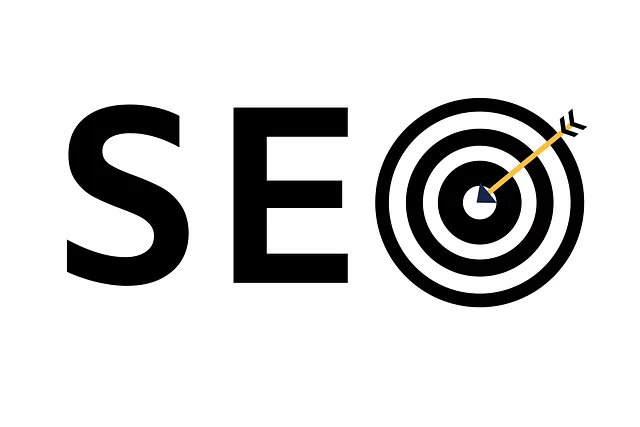SEO Content Writing is a strategic process that creates valuable, relevant content to attract audiences, boost business growth, and enhance online visibility. A well-structured content calendar aligns creation with search engine algorithms and user preferences, ensuring consistent, engaging delivery. Understanding target audiences and their demographics, interests, and pain points is crucial for personalizing content that resonates with them.
A monthly content plan sets clear goals aligned with audience needs, incorporating relevant keywords optimized for search engines. Balancing topic diversity and relevance in the content calendar appeals to varied user interests while maintaining focus. High-quality, informative content with strategic keyword placement, varied structures, and storytelling engages readers and improves search rankings.
On-page SEO optimization involves refining text, titles, headings, meta descriptions, and image optimization for better user experience and search engine rankings. Visuals like images, infographics, or videos enhance appeal, reduce bounce rates, and provide alternative indexing points for search engines. Effective scheduling plans content release times based on audience behavior to maximize reach and engagement.
Regularly analyzing content performance through metrics like organic traffic, click-through rates, and time spent on page guides future content creation and ensures strategies remain aligned with user preferences and search engine algorithms.
In the dynamic landscape of digital marketing, a well-structured SEO Content Calendar is your secret weapon. This strategic roadmap ensures consistent, relevant, and engaging content that captivates your target audience while boosting search engine rankings. Mastering SEO Content Writing requires understanding its profound impact on visibility and traffic. This comprehensive guide navigates every step, from defining your audience and conducting keyword research to optimizing visuals and analyzing performance, empowering you to craft compelling content that drives results.
Understanding SEO Content Writing and Its Impact

SEO Content writing is a strategic approach to creating and distributing valuable, relevant, and consistent content that attracts and retains targeted audiences, ultimately driving profitable customer action. It involves optimizing text with relevant keywords and phrases, ensuring it aligns with search engine algorithms and user intent. By understanding how search engines crawl and index websites, SEO content writers can craft pieces that enhance visibility in organic search results, drawing in more potential customers.
The impact of effective SEO Content Writing is profound. It boosts website traffic by ranking higher on search engine pages (SEPs), thereby increasing online exposure. Well-crafted content builds trust with readers, positions brands as thought leaders in their industries, and drives engagement through sharing and interaction. Additionally, it aids in establishing a solid online presence, fostering long-term relationships with an audience and, ultimately, driving business growth.
Defining a Content Calendar: Your Strategic Roadmap

Defining a content calendar is the first step in crafting an effective SEO content writing strategy. It serves as your strategic roadmap, outlining when and how often to publish content across various platforms. By aligning your content creation with search engine algorithms and user preferences, you can ensure that your website stays relevant and engaging. A well-structured content calendar helps identify topics, formats, and distribution channels that resonate with your target audience, ultimately driving more organic traffic and boosting your online visibility.
This strategic planning tool allows for a consistent flow of valuable content. It enables you to stay organized, coordinate with your team, and adapt quickly to changing trends and keywords. With a defined calendar, you can create a cohesive content strategy that not only satisfies search engine requirements but also captivates and retains your audience’s interest.
Identifying Target Audience and Keyword Research

Identifying your target audience is a crucial step in creating an effective content calendar for SEO content writing. Understanding who your ideal readers are, their demographics, interests, and pain points, allows you to produce content that resonates with them. This personalization ensures your efforts are not only optimized for search engines but also tailored to engage and convert potential customers. Keyword research is an integral part of this process. By identifying relevant keywords and phrases used by your target audience when searching for solutions or information related to your niche, you can strategically incorporate these keywords into your content. This practice enhances your website’s visibility on search engine results pages, making it easier for your target audience to discover your content.
Creating a Monthly Content Plan: A Step-by-Step Guide

Creating a monthly content plan is a strategic move for any digital marketing strategy, especially in the realm of SEO content writing. It involves mapping out your topics and themes well in advance, ensuring a consistent flow of valuable material that resonates with your target audience. Here’s a step-by-step guide to help you get started:
1. Define Your Goals: Begin by setting clear objectives for your content calendar. Do you aim to increase website traffic, boost engagement, or establish your brand as an industry authority? Aligning your content strategy with these goals is crucial. For instance, if driving organic traffic is a priority, focus on keyword-rich topics and optimize existing pages.
2. Identify Target Keywords: SEO content writing revolves around keywords. Research and identify relevant search terms your target audience uses to find information related to your niche. Tools like Google Keyword Planner or SEMrush can assist in discovering high-volume, low-competition keywords. Incorporate these into your content plan, ensuring each piece targets a specific keyword phrase.
3. Organize Your Themes: Divide your content into thematic categories for a structured approach. For example, you could have ‘Tech Trends,’ ‘Health and Wellness,’ or ‘Seasonal Guides’ as monthly themes. This organization makes it easier to create diverse yet cohesive content within each theme.
4. Outline Content Types: Within each theme, decide on the formats you’ll use. Will you publish blog posts, infographics, videos, podcasts, or a mix? Diversifying your content types caters to different consumer preferences and keeps your audience engaged.
5. Create a Schedule: Allocate specific dates for each piece of content, ensuring a balanced distribution throughout the month. Consider seasonal trends, holidays, and any major events in your industry that might impact your topic’s relevance.
Balancing Topic Diversity and Relevance

A successful content calendar for SEO must balance topic diversity and relevance. While it’s essential to cover a range of subjects relevant to your target audience, spreading yourself too thin can diminish the impact of each piece. Think of it like a meal—a balanced diet requires variety but not every bite needs to be a main course. Incorporate long-tail keywords targeting specific niche topics within broader categories to appeal to diverse user interests while ensuring each article remains focused and valuable.
SEO content writing isn’t about quantity over quality; it’s about providing useful, informative, and engaging content that satisfies both search engine algorithms and reader expectations. Strike a chord by interweaving relevant topics with strategic keyword placement, varied sentence structures, and compelling storytelling techniques—all hallmarks of effective SEO content writing.
Optimizing Content for On-Page SEO

Optimizing content for on-page SEO is a strategic process that involves integrating relevant keywords naturally within your text. This includes refining titles, headings, and meta descriptions to be both engaging and informative while incorporating target keywords. Effective SEO content writing ensures that your website’s pages are not only appealing to readers but also easily digestible for search engines.
By optimizing images with alt tags and ensuring a clean, organized page structure, you enhance the overall user experience. Search engines like Google favor websites that provide quick loading speeds, mobile-friendliness, and relevant, high-quality content. Incorporating these on-page SEO techniques allows your content to rank higher in search results, driving more organic traffic to your site.
Incorporating Visuals and User Engagement

Incorporating visuals and user engagement is a pivotal strategy within any effective SEO content calendar. High-quality, relevant images, infographics, or videos can significantly enhance the appeal of your written content, encouraging readers to spend more time on your pages and reducing bounce rates. These visual elements not only break up text but also provide alternative ways for search engines to understand and index your material, improving overall SEO performance.
User engagement is another critical aspect that SEO content writing should aim to capture. Interactive components such as polls, quizzes, or user-generated content sections can foster a sense of community and encourage visitors to actively participate. This increased interaction signals to search engines that your site offers valuable, engaging content, further boosting its visibility and ranking potential.
Scheduling and Publishing for Maximum Impact

Effective scheduling and publishing are key to unlocking the full potential of your SEO content writing strategy. A well-planned content calendar ensures that your valuable material is released at the optimal times, maximizing its reach and impact on search engine rankings. By understanding your target audience’s online behavior, you can align your publishing schedule with peak engagement times, ensuring your content receives the attention it deserves.
Regularly publishing high-quality SEO-optimized posts demonstrates to search engines that your website is active and authoritative in its niche. Consistency is crucial; a consistent publishing schedule helps establish a routine that both your audience and search algorithms can anticipate. This approach not only keeps visitors engaged but also encourages them to return for more, fostering a loyal following and potentially increasing organic traffic over time.
Analyzing Performance and Refining Your Strategy

Analyzing the performance of your content is a crucial step in refining your SEO content writing strategy. By tracking key metrics such as organic traffic, click-through rates, and time spent on page, you gain valuable insights into which types of content resonate with your audience and which areas need improvement. This data should guide future content creation, helping you to focus on topics that have proven successful and refine or pivot from those that haven’t.
Regularly reviewing and adjusting your content calendar based on performance data ensures that your SEO efforts remain aligned with search engine algorithms and evolving user preferences. This iterative process allows for continuous improvement, ensuring your website provides valuable and relevant content that not only ranks well but also offers a positive user experience, ultimately driving increased engagement and conversions.



